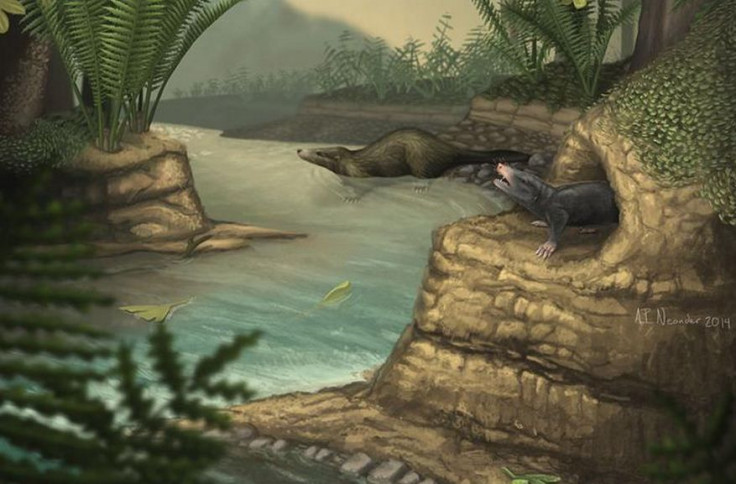Ancient Mammals That Coexisted With Dinosaurs In Jurassic Era Discovered In China

Ancient Earth during the Jurassic period was roamed not only by gigantic dinosaurs, but was also home to small tree-dwelling and subterranean mammals exhibiting widespread ecological diversity, according to the findings of studies based on fossils of two new species of ancestral mammals discovered in China.
The 160 million-year-old fossils are linked to two pre-historic mammals, identified as “Agilodocodon scansorius” and “Docofossor brachydactylus.” The first one was a tree-dwelling mammal equipped with claws for climbing, while the second species was a subterranean mammal with paws similar to that of the modern-day African golden moles. Two separate studies, conducted by scientists from the University of Chicago and Beijing Museum of Natural History, were published in Friday's edition of the journal Science.
“We consistently find with every new fossil that the earliest mammals were just as diverse in both feeding and locomotor adaptations as modern mammals,” Zhe-Xi Luo, a professor at the University of Chicago and a co-author of both the studies, said in a statement. “The groundwork for mammalian success today appears to have been laid long ago.”
Agilodocodon, which lived about 165 million years ago, had hands and feet with curved horny claws and limbs that are typical traits of mammals living on trees or in bushes. It also had spade-like front teeth that were useful for feeding on the gum or sap of trees.
Docofossor, which lived nearly 160 million years ago, had shovel-like fingers for digging, while its short and wide upper body was similar to that of mammals that go underground for hunting. Docofossor also had reduced bone segments in its fingers -- an adaptation similar to the one found in African golden moles.
In addition, the spines and ribs of both Agilodocodon and Docofossor also show evidence for the influence of genes seen in modern mammals.
“We can now provide fossil evidence that gene patterning that causes variation in modern mammalian skeletal development also operated in basal mammals all the way back in the Jurassic,” Luo said.
© Copyright IBTimes 2024. All rights reserved.






















